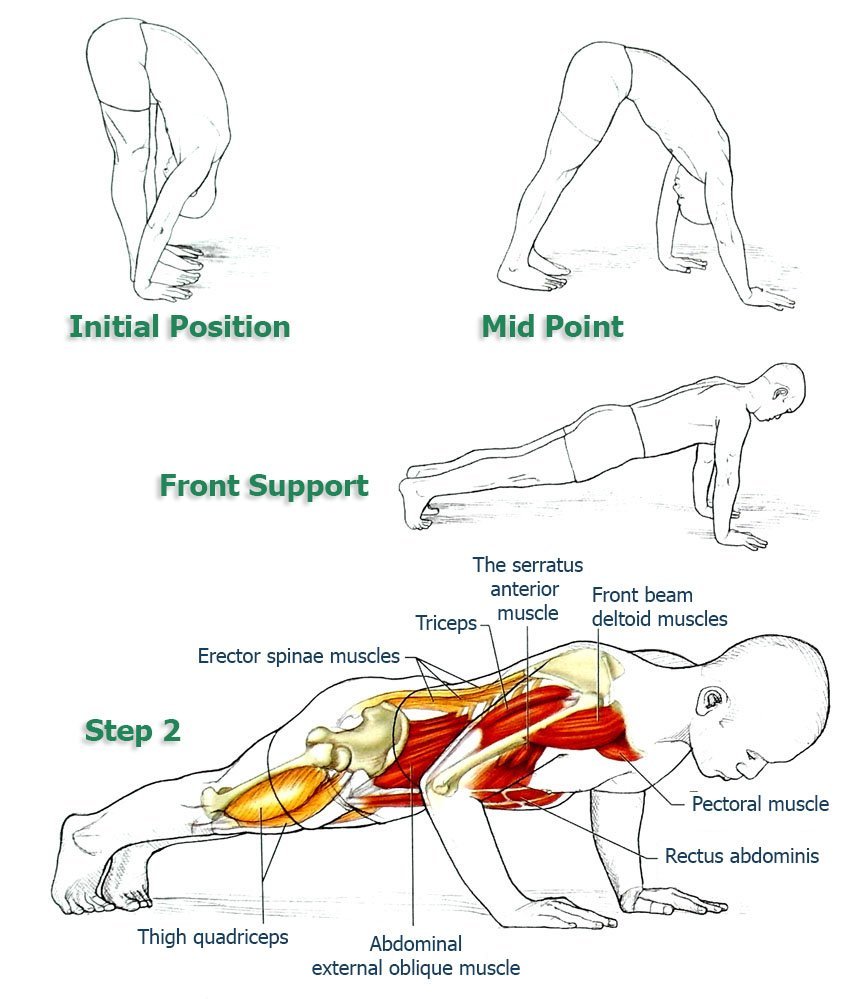The Push-up might be the most famous upper body exercise in the world. It helps to develop strength and endurance, build upper body muscle, strengthen the joints and even help coordinate work between the muscles of the mid-section and the lower body muscles.
Anyone who thinks that Bench Press is the most productive upper body strength exercise is mistaken; it not only delivers artificial upper body loads, but also hurts your Rotator Cuff and elbow joints, even if performed for a short period of time. On the other hand, the classic Push-up protects your joints and develops practical and natural strength, applicable not only in the gym, but also in everyday life. This is why the Push-up is the number one exercise for building upper body muscle and strength, and is the most common exercise in military training camps and academies since time immemorial – there are records of ancient warriors doing Push-ups to prepare for battle.
Performed correctly, Push-ups have a strengthening, restorative and revitalizing effect on the joints and tendons. Muscles that run through your fingers, wrists, forearms and elbows are gradually becoming stronger and tougher, reducing the risk of carpal tunnel syndrome, elbow injuries and a number of other diseases. Push-ups increase blood flow, cleaning vessels and joints from decay and other accumulated debris. Anyone who includes Push-ups in their workout suffers less damage to joints than those who are solely using weights.
Different types of Push-ups are working different muscles, but absolutely all their modifications have an unrivaled advantage in real physical strength and muscle mass. Push-ups are dynamically working the upper body muscles, the large and small muscles of the chest and the deltoid muscle, and involve all three triceps muscles – the most important muscle of the upper arm. Furthermore, the latissimus dorsi, some deeper muscles in the chest, muscles of the spine, abdomen and waist, the hip muscles, glutes, quadriceps and the shin, even the feet and toes, are all getting a dose of isometric exercise!
Today we’ll present a Push-up variation with unique benefits to the core, the shoulder flexors and elbow extensors, the hamstring and frontal core and spinal coordination. Beginners start here, the rest continue reading.

Initial position: Stand with the spine bent forward and the palms on the mat or as close to the mat as your flexibility allows, as shown on the image. If you have trouble reaching the mat, you can start with the knees slightly bent. Then walk your palms forwards to Front Support position as shown above. Next:
- Inhale and bend your elbows and lower the chest towards the mat. See the main muscle illustration;
- Exhale, straighten the elbows and raise the trunk to Front Support. Do 2 more push-ups (Steps 2 and 3), and then walk the palms back as the hips flex to return to the initial position. Repeat the entire sequence 5 times.
Make Sure You:
- When in Mid Point position, swing one arm forward using the shoulder flexors, place it on the mat, and then shift the torso forward over the arm through use of the shoulder extensors. As the body weight shifts in front of this support hand, after the other arm swings forward, the shoulder flexors act to keep the chest lifted and the upper torso from lowering toward the mat;
- Keep the pelvis lifted to encourage use of your abs to prevent the lower back from arching, and use the hip flexors to prevent hip hyperextension as you walk your arms forward and the pelvis lowers;
- One common mistake to be avoided when you reach Front Support is leaving the buttocks lifted up. Use the hip extensors to bring the bottom of the pelvis down toward the mat as the abs lift so that the pelvis comes in line with the ankles and shoulders;
- In Step 2, keep the elbows close by the sides as eccentric contraction of the elbow extensors controls the bending of the elbows and eccentric contraction of the shoulder flexors controls the backward movement of the upper arms, lowering of the chest towards the mat;
- During Step 3, the elbow extensors straighten the elbows, and the shoulder flexors bring the upper arms forward to raise the chest back to Front Support;
Benefits
In this Push-Up variation, by learning to maintain a neutral Front Support, you increase the skill of your abdominals and scapular abductors. It’s also a great way to strengthen the shoulder flexors and elbow extensors. The shoulder flexors are used to raise the arms to the front in everyday or sporting activities, while the elbow extensors are used in pushing and overhead lifting motions. Additionally, the dynamic movement in and out of Front Support provides further core challenges to achieve a coordinated transition from spinal flexion to extension and back to flexion. The initial position also provides potential dynamic flexibility benefits for the hamstring muscles.
Modifications
If tightness in the hamstring prevents you from placing the palms on the mat at the beginning of the exercise, bend the knees sufficiently to allow your palms to support your body weight. As you reach Front Support, gradually straighten the knees. Perform the 2 push-ups in this position before returning to the initial position, again using bent knees when transitioning to the standing position.
If you are still having difficulty achieving the desired positioning in the exercise, concentrate on practicing walking out and back to Front Support without doing the push-ups.


